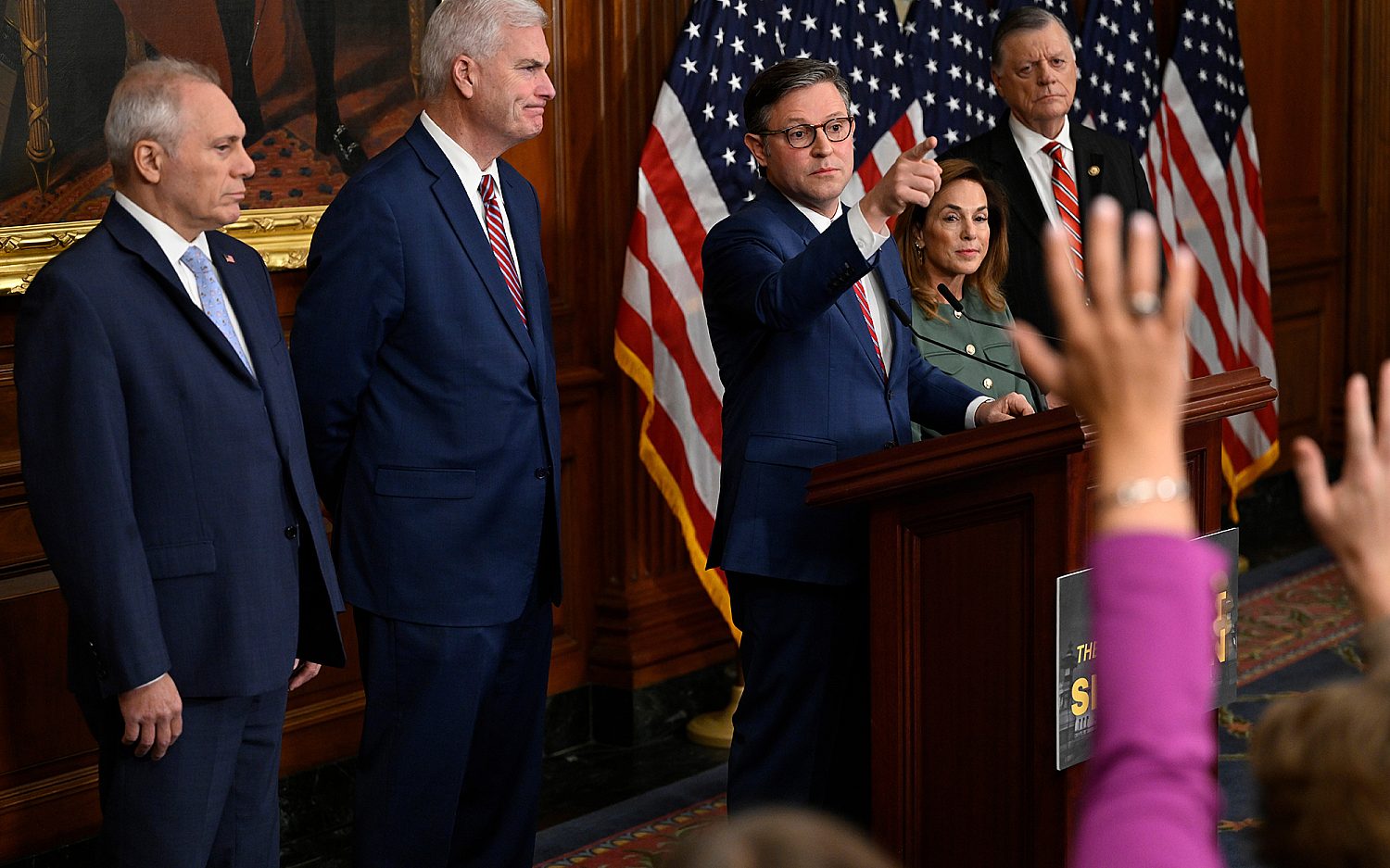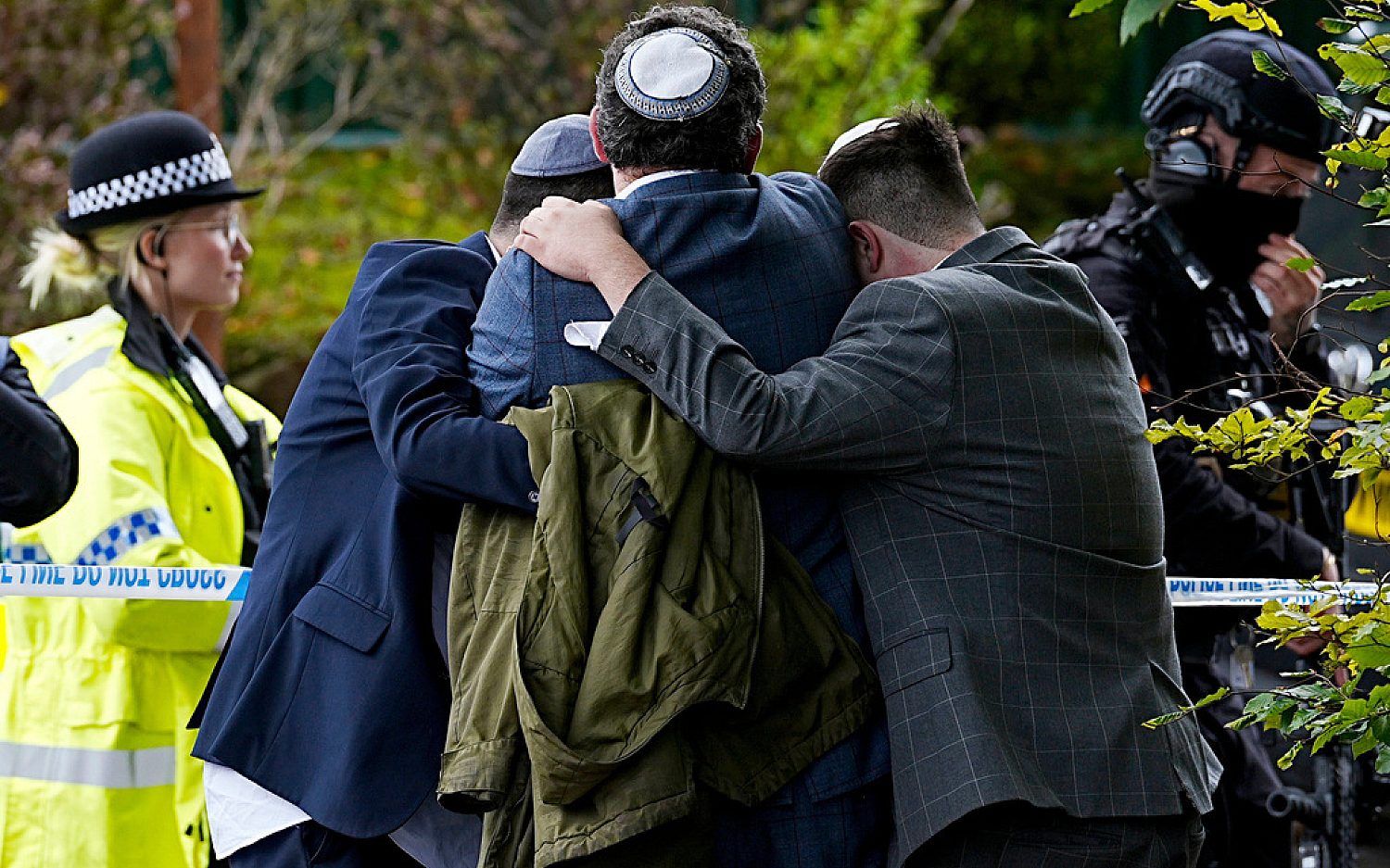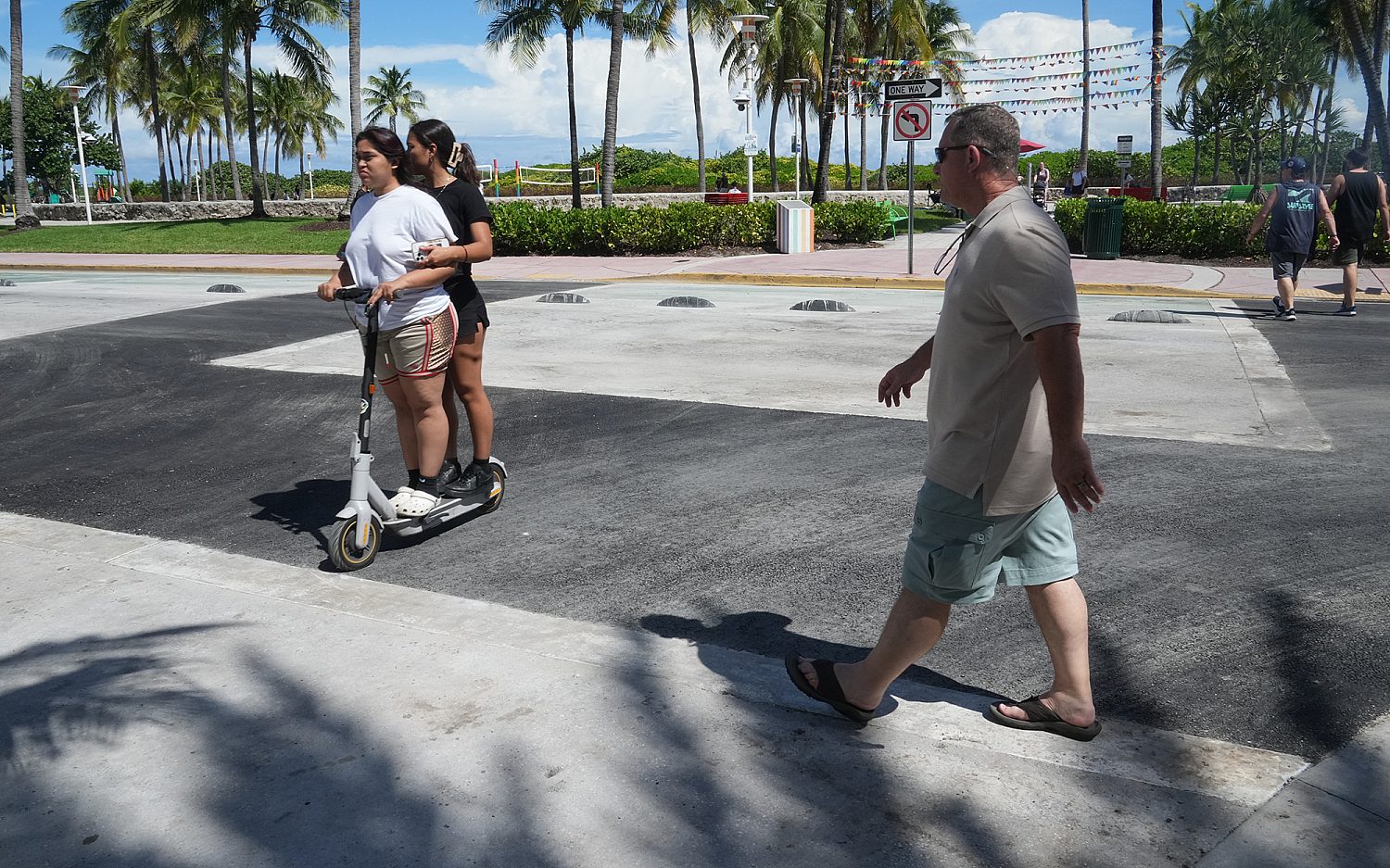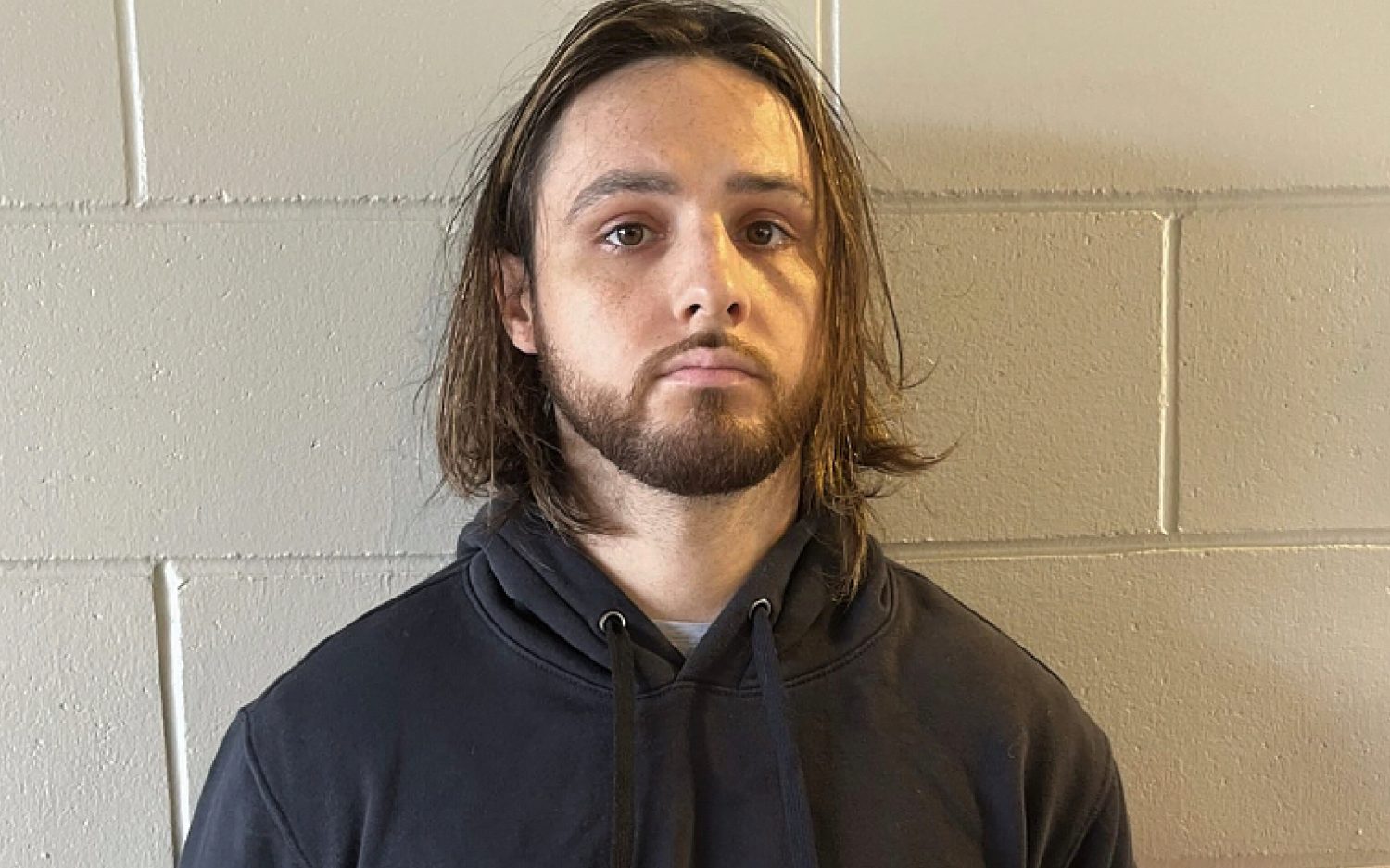The global shame of sex trafficking
In 2002, WORLD reported on the millions of women and girls sold into sexual slavery worldwide each year and asked why the U.S. State Department wasn’t doing more to end their nightmare
Editor’s note: This article originally appeared in the June 15, 2002, issue of WORLD Magazine and is republished here as part of our Saturday Series.
With his pressed, white shirt and slicked-back hair, the young Thai man comes across as an earnest, trustworthy salesman. The product is sure to be satisfactory, he repeatedly tells the buyer sitting across a low table. But the buyer isn’t sure. He’s from the West, and he doesn’t know the laws of this hot, humid country. An older Thai man seated next to the salesman tries to be reassuring. He’s a police chief, and he knows the law. The buyer needn’t worry: He’ll have no trouble with the authorities on this particular transaction.
The product, meanwhile, fidgets restlessly and smiles uncomprehendingly. She doesn’t speak English, so she can’t be sure what the three men are saying. But she knows the salesman, and she’s seen plenty of other men like this Westerner. She must know that they are haggling over her price, or perhaps what services she will perform. Even in the grainy video, shot secretly by the International Justice Mission of Arlington, Va., the girl looks nervous and resigned—and very young.
She is, in fact, only 14. She’s not supposed to be in this room, in this situation. Despite the assurances of the older man, Thai law does forbid prostitution, and children, especially, are supposed to be protected from Western predators looking for a cheap night of pleasure.
But the law means nothing when law-enforcement officials can supplement their meager salaries by renting out such girls by the hour. And there’s no shortage of money to pass under the table: A young virgin from Thailand’s impoverished hill country or from across the border in China might be indentured for about $100. A single trick with a Western tourist or Japanese businessman repays that investment for the girl’s owner, or mamasan, and every additional customer is pure profit.
With the rewards so high and the risks almost nonexistent, Thailand’s prostitution industry has an endless appetite for fresh talent. Experts say that some 60,000 girls every year are trafficked into sexual slavery in Thailand alone. Because younger girls command premium prices and can work longer “careers,” children are especially prized by brothel owners. Small wonder that an estimated 80 percent of Thailand’s 1 million prostitutes are under the age of 16. For many of them, sex trafficking is a death sentence: At least half the child prostitutes in Thailand are thought to be HIV positive.
And Thailand is hardly the only—or even the worst—offender. The Protection Project, an international anti-trafficking effort based in Washington, offers statistics that seem almost inconceivable:
Some 200,000 Nepali girls, many younger than 14, work as sexual slaves in India. The island nation of Sri Lanka has an estimated 10,000 children between the ages of 6 and 14 working in forced prostitution. About 10,000 women from the former Soviet Union were forced into prostitution in Israel. As many as 50,000 victims a year are trafficked into the United States. The number of women and children trafficked worldwide each year, according to estimates by the CIA, could be as high as 2 million.By their sheer magnitude, such numbers tend to dehumanize the problem. Groups like the International Justice Mission are trying not only to rescue the victims but to give them a face and a voice.
In another IJM video, shot during a recent brothel raid in Mumbai, India, rescuers force open a tiny door in a concrete basement wall. Out of the dark, low-ceilinged basement comes a steady stream of young girls, their dirty saris clinging to their undeveloped bodies. Their dark, round eyes blink in confusion and relief as they emerge into the harsh sunlight. Many bury their faces in their hands, as if they were somehow to blame for the things they’d been forced to do.
The U.S. government is trying to help, but critics charge Uncle Sam is fighting the traffickers with one hand tied behind his back.
In 2000, Congress passed the Victims of Trafficking Protection Act, which President Clinton signed, despite reservations, in the closing days of his administration. The new law required an office within the State Department to monitor sex trafficking around the world. Each year the department would issue a list of offending countries with the worst examples relegated to Tier 3—a categorization that would automatically deny them millions of dollars in U.S. foreign aid. Tier 1 and Tier 2 were designed for countries making real strides to combat trafficking. A nation in either of those categories might be mildly embarrassed, but wouldn’t suffer the huge financial consequences reserved for those in Tier 3.
Thanks to the slow confirmation process for new Bush appointees, the first so-called TIP (Trafficking in Persons) Report, issued in July 2001, was written largely by Clinton holdovers. It consigned 23 countries to Tier 3 status, but some of the most notorious trafficking nations, including Cambodia, India, and Thailand, managed to land in Tier 2, thus escaping economic sanctions. Conservatives hoped that the 2002 report, fully compiled in the Bush administration, would put those countries in Tier 3 where they belonged—and start the process of freeing hundreds of thousands of women and girls from sexual slavery.
Instead, the new TIP report, issued June 15, has many conservatives—and their feminist allies—up in arms. “A year and a half into the Bush administration, matters are at least as bad as they were in the Clinton administration, and in some ways worse,” says Michael Horowitz of the Hudson Institute, one of the leading voices in the campaign against trafficking. “In all my years in Washington, I have seldom seen as savage a battle going on beneath the radar screen.”
Round 1 of that battle between Bush appointees and entrenched State Department bureaucrats seems to have gone to the bureaucrats. Not only were India and Thailand not banished to Tier 3, but other serious offenders, including Albania, Malaysia, and Pakistan, were actually bumped up to Tier 2. In fact, the first Bush administration TIP Report lists only 19 countries in the lowest category, compared to 23 the year before.
No one believes that the laws of a single nation can fully halt the huge and lucrative trade in women and children, which ranks, in dollar terms, just behind drug smuggling and arms trading on the list of international crimes. But a law with stiff financial penalties could go a long way toward sparing girls from a life of sexual slavery—if only it were properly enforced.
On paper, the issue looks like a no-brainer for the Bush administration. Sexual trafficking is one of those rare causes that brings together right and left, evangelical Christian and secular humanist.
“You’ve got soccer moms and Southern Baptists, the National Organization for Women and and the National Association of Evangelicals on the same side of the issue,” Horowitz says. “Pro-family issues are usually controversial, but on this one, you’ve got everyone in agreement. Gloria Steinem and Chuck Colson together. Doesn’t the White House get it?”
Bush administration officials insist they do get it, but that the go-along, get-along culture of the State Department makes it difficult to achieve any sort of consensus on which countries should be sanctioned.
“It’s been a difficult process,” admits one official who asked not to be identified, per administration rules on speaking to the press. “We believe the intent of the law is to galvanize countries into action, and only when you place a country in Tier 3 will that happen. But some within the State Department believe that just being on the list is enough. They’re more cautious, basically, more aware of the diplomatic issues involved.”
In the wake of Sept. 11, even critics admit that the diplomatic issues are more delicate than ever. Did the United States really want to publicly embarrass Israel while that key ally was fighting for its very existence? What about Pakistan and Kazakhstan, two countries the United States needs desperately in its war against the Taliban? Likewise, could we afford to humiliate moderate Muslim nations like Malaysia, a bastion of stability in shaky Southeast Asia?
But anti-trafficking activists insist that by considering all those extraneous factors, the State Department is subverting the very intent of the law. “If you have to consider all these other political factors, then the process is critically flawed,” argues Lisa Thompson of the Initiative Against Sexual Trafficking, a broad-based coalition headed by the Salvation Army. “It’s not about the situation in Kashmir or the tension between Palestine and Israel or all these myriad other important issues. [The TIP Report] shouldn’t be used to manipulate other political debates or international relationships. Otherwise it’s a corrupt process and you might as well not bother.”
Beyond the normal “walk softly” attitude at the State Department, critics say the trafficking law is being hijacked by a committed band of ideologues intent on advancing an agenda too radical even for mainstream feminists like Steinem. They want to legalize prostitution, viewing it as a potentially empowering career option for poor women who voluntarily choose to sell their bodies. The legalization movement has already won in Germany, the Netherlands, and Australia, and similar legislation appears headed for victory elsewhere, including New Zealand and South Africa.
What bearing does legalization have on the trafficking of women? Those who favor legalized prostitution insist that “voluntary sex workers” are in a completely different category from those women forced by brutal owners to service men against their will. They say they can improve working conditions for the former while simultaneously rescuing the latter.
Nonsense, says Donna Hughes, a professor of Women’s Studies at the University of Rhode Island and a leading expert on trafficking. “Where prostitution is illegal, if you find an act of prostitution, you know the law’s been broken. With legalized prostitution, the pimp simply says, ‘But she consented.’ Then it becomes like the current debate in this country over date rape. The woman has to try to prove that she didn’t consent. If the prostitution had not been legal, the pimp couldn’t make that defense in the first place. So it makes the job of law enforcement that much harder.”
The administration’s stance on legalized prostitution should be clear-cut. Laura J. Lederer, President Bush’s appointee as senior deputy adviser in the State Department’s Office to Monitor and Combat Trafficking in Persons, says flatly that prostitution as a career choice is unacceptable.
“This is not a legitimate form of labor. We’ve been fighting this trend that says if we could just get rid of the AIDS, STDs, and other diseases, the rape and violence, the organized crime, drug trafficking and drug addiction associated with prostitution, it could be a legitimate career option for women,” said Lederer.
“This administration is saying you cannot clean this up,” she said. “It can never be a legitimate way to make a living because it’s inherently harmful for men, women, and children. It goes in the opposite direction of President Bush’s pro-woman, pro-family, human-rights agenda.”
Lederer sees parallels between those who would legalize prostitution today and those who tried to improve the lot of 19th-century African slaves. “Some people argued that if we could just make the chains a little less tight and clean up the slave quarters, then slavery would be fine. They wanted to just regulate it, basically. Others said no, this is inherently evil and we need to abolish it. That’s the approach that we want to take—that this whole commercial sex industry is a human-rights abuse.”
Yet, incredibly enough, not everyone in the Bush State Department agrees. Anti-prostitution groups like Miramed, a pioneering nongovernmental organization working to stop the trafficking of Russian women, have seen their funding suddenly cut off. Meanwhile, groups like the International Research and Exchanges Board (IREX) continue to receive government grants for anti-trafficking efforts that hold open the possibility of legalized prostitution.
“In terms of the State Department, trying to find where the buck stops is next to impossible,” says Lisa Thompson of the Initiative Against Sexual Trafficking. “A lot of groups that do really good work are trying to get funding, and they’re totally getting the runaround. It makes you wonder how groups like IREX get to the trough.”
So entrenched are the pro-legalization forces after eight years of Bill Clinton that the State Department has yet even to formulate a clear stance on the subject. One draft policy statement unequivocally “rejects the view that the legalization of prostitution and related activities … should be treated as a legitimate or empowering form of work for women.”
Yet after weeks of debate within a Republican-dominated agency, the policy has yet to be adopted. Meanwhile, as the State Department fiddles with policy statements, much of the world burns. Millions more women and girls will end up as sexual slaves in the next 12 months, victims of greed, corruption, lust—and, perhaps, the Washington bureaucracy.
Muffled screams
Does the State Department assign countries to their tiers based strictly on evidence of forced prostitution, or do outside diplomatic pressures affect the rankings?
U.S. law says that offending countries must be making real progress against sex trafficking in order to win a Tier 1 or 2 ranking. Advocates for trafficking victims say that should be interpreted to mean that police are cooperating with efforts to rescue sexual slaves, are not shielding brothel owners, and are prosecuting the pimps of child prostitutes, in accord with local laws.
So, how are some of the worst offenders doing on those counts? WORLD obtained hundreds of pages of actual reports submitted to the State Department by nongovernmental organizations (NGOs) working to combat sex trafficking around the globe. Each case is meticulously documented with dates, times, street addresses, names of officials, and names of victims. In many cases, there are also actual photos of the victim and her pimp or madam. What follows are excerpts of verbatim transcripts of those reports; only identifying information has been changed to protect the NGOs, which often do their work undercover.
Jan. 22, 2002 22:00–03:00 hours Mumbai, India NGO representatives went to Khetwadi (red-light area) and were surprised to see the whole area closed down. There were a few policemen in uniform who did not allow any prostitutes on the streets and were telling them of a possible raid. Members of the NGO undercover team were told by the police to leave the area because there would be a raid. … During the raid, NGO advocate Malashri overheard constable Prassed saying to a brothel keeper, “We warned you there would be a raid. Why didn’t you take precautions?”Victim name: T Age: 13–14 Nature of abuse: Forced prostitution
Oct. 29, 2001 9:20 hours Mumbai, India Despite a pre-arranged raid to rescue girls forced into prostitution in Sonapur red-light area, Senior Inspector Gangwal refused to conduct the raid. Assistant Constable Chauhan, who agreed to do the raid when spoken to on Oct. 24 also refused to authorize the raid. He admitted that he had given his word but stated that he “would not keep his word.” Victims: K, K, and AAges: approximately 15 Nature of abuse: Forced prostitution
Feb. 22, 2002 23:00 hours Mumbai, India A successful raid was conducted by the police and the NGO. One girl was rescued from a brothel on Navalkar Lane. The NGO lodged a First Information Report (FIR) [and] requested the assistant police inspector to charge the accused with sections 3, 4, 5, 6, and 9 of the Immoral Traffic Act and sections of the Indian Penal Code. API refused in the same way that he did during the prior raids on 12-11-01 and 01-11-02. … As a result of this refusal to enforce legislation, the accused was released the day after arrest. Age verification tests by the police subsequently proved the victims were minors.
April 27, 2002 Thailand It is imperative that we are proactive in this case to secure the arrest of the owner of the brothel. The police refuse to arrest her. … From one interview with a victim we have learned the following: Three weeks ago she was tricked by the owner to go with her from Burma to Thailand. On her first night, a Chinese customer paid 30,000 baht to rape a virgin. When the victim screamed in pain, the owner came in and put tape over her mouth and head to muffle the screams until the customer finished. … So confident is [the owner] that she will not be called into account, she slept in the brothel after we raided it and left the next morning before we raided it again.
Name in Thai: D Nationality: Burmese Date of birth: 1988 One day during school break a woman named M told her mom that during school holidays she should let her daughter, D, go to work in Thailand. M also told her mom that D would work in a noodle shop and that the owner would help D get a Thai ID card. Upon agreement to take D to work in Thailand, M took D and another girl named T to J, who is the brothel owner. M received about 6,000 baht from J for each girl. J arranged for one man to drive the two girls from Mae Sai to Bangkok. D said she knew that this man who took them to Bangkok is a police officer because he wore pants the same color as other Thai police and a white T-shirt which had a red stripe and police symbol. … At the checkpoint this man showed two fingers to the police and they let him pass through without stopping. This man handed them to the owner and received 3,000 baht for delivery of the two girls. D said since she arrived, she was forced to work at a brothel and received 3–7 customers a day. During Songdran festival, she had to receive up to 12 men. Worked from 4 p.m. till 5 a.m. and never got paid.
An actual newsletter worth subscribing to instead of just a collection of links. —Adam
Sign up to receive The Sift email newsletter each weekday morning for the latest headlines from WORLD’s breaking news team.




Please wait while we load the latest comments...
Comments
Please register, subscribe, or log in to comment on this article.